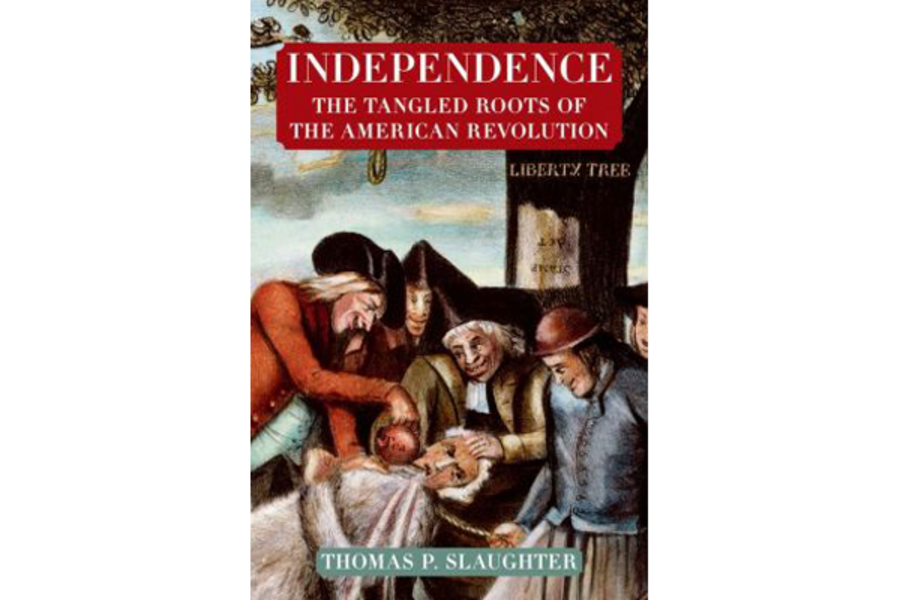'Independence' tells in rich detail how the American Revolution grew
Loading...
When were the seeds of the American Revolution sown? History, like beauty, is in the eye of the beholder. Some suggest that real rebellion began with the bloodletting at Lexington and Concord, Mass., in 1775; others credit the Boston Massacre of 1770; while still others argue that it was the Stamp Act of 1765 that set the revolution in motion. No less an observer than John Adams said Americans waxed rebellious as early as 1760.
But in Independence: The Tangled Roots of the American Revolution, Thomas P. Slaughter sets it back further still, across the Atlantic, back to England and Ireland, where fiercely independent East Anglians and Scotch-Irish chose danger and the unknown over the imperfect haunts of their ancestors.
Slaughter, a history professor and the author of five earlier books, posits that future Americans were fed up with the mother country well before they disembarked at Plymouth or Jamestown. They wanted religious, economic, or social freedom – or all three – and were willing to risk their lives to acquire them. In fact, the British spoke early and often about the likelihood of a transatlantic divorce. It takes an empire to know an empire on the make.
Yet however disgruntled and independent-minded they may have been, the colonists still considered themselves loyal citizens of Britain, right to the bitter end. They served dutifully in Britain’s serial wars with the French, doing battle with their rival colonists from Canada.
But a long-distance relationship is inherently problematic, and there was always the issue of control. The British wanted the Americans to trade only with them and to stop encroaching on Indian lands. They also insisted that colonists pay for their keep through taxes. And after Britain’s triumph over France in the Seven Years’ War (1756-63) added Canada and India to its colonial portfolio, a cash-strapped London leaned heavily on its expanded empire. In pursuing this policy, Slaughter writes, the Parliament and the king “did not consider the American colonists’ opinions any more seriously than those of Hindus of Bengal or West Indian slaves.”
That was a grievous error. It required a great and ongoing misunderstanding, says Slaughter, to push two groups of people with so much in common to violence: “Colonists continued to strive for independence within the empire, while British administrators continued to believe that the colonists were aiming at independence from the empire.”
Slaughter’s treatise is richly detailed – sometimes excessively so. The reader, for example, will learn more than enough about colonial campaigns in Cape Breton and differing accounts of the 1747 Knowles Riot in Boston. Keeping track of voluminous particulars can be a challenge.
However, nitpicking aside, Slaughter contributes greatly to our understanding of the depth and complexity of revolutionary thought and feeling in Colonial America. Even after July 4, 1776, Slaughter points out, only about half of all white Americans supported the cause. And while some have argued that the American Revolution was largely an aristocratic affair, fomented by plantation owners such as Thomas Jefferson and literate professionals such as John Adams, Slaughter makes clear that it required a hearty class mix to carry the day. George Washington deemed the actions of the original Tea Partyers appalling yet Slaughter credits their “strong arms and aching backs” and notes: “Without them there would have been … no army to fight if it came to that.”
Slaughter is an ambitious researcher and writer and “Independence” encompasses much – sometimes too much. But readers eager for a fresh and expansive view of the way that independence came to the 13 Colonies will find this a stimulating and engrossing read.
David Holahan regularly reviews books for the Monitor.








